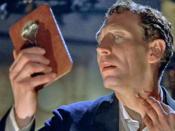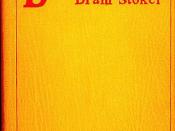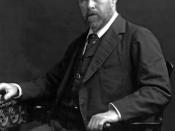Around the turn of this century there was widespread fear throughout Europe, and especially Ireland, of the consequences of the race mixing that was occurring and the rise of the lower classes over the aristocracies in control. In Ireland, the Protestants who were in control of the country began to fear the rise of the Catholics, which threatened their land and political power. Two Irish authors of the period, Bram Stoker and William Butler Yeats, offer their views on this "problem" in their works of fiction. These include Stoker's Dracula and Yeats' On Baile's Strand and The Only Jealousy of Emer, and these works show the authors' differences in ideas on how to deal with this threat to civilization. Stoker feels that triumph over this threat can only be achieved by the defeat of these "demonic" forces through modernity, while Yeats believes that only by facing the violent and demonic forces and emerging from them could Ireland return to its ancient and traditional roots and find its place in society.
The vampire was a common metaphor used by many authors in an attempt to portray the rising lower class and foreign influence as evil and harmful to modern civilization. The Irish Protestant author Sheridan Le Fanu uses vampires to represent the Catholic uprising in Ireland in his story Carmilla. Like much of gothic fiction, Carmilla is about the mixing of blood and the harm that results from it. When vampires strike, they are tainting the blood of the pure and innocent, causing them to degenerate into undead savages who will take over and colonize until their race makes up the condition of the whole world. This was the fear the Protestants had of the rising Catholic class. They were seen as a lowly people and the fear was that they...


